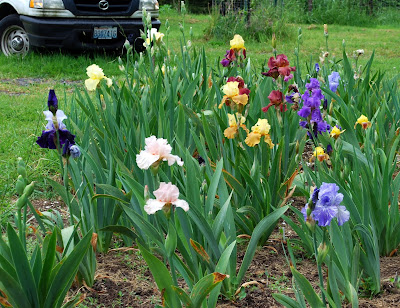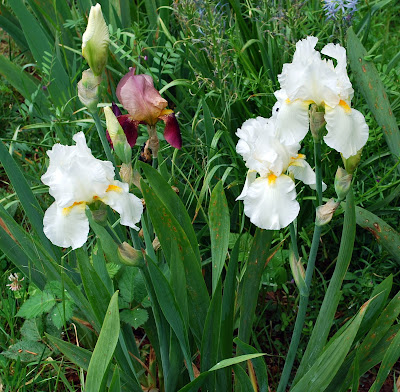 |
| Modern Bearded Iris "Los Coyotes". 5.17.19 |
I bought "Los Coyotes" about 5 years ago. This iris is among the rescues that I collected from around the yard last summer, and this is the first time that it has bloomed so nicely. No scent that I can appreciate. The flowers are lush, large, and have that classic yellow standards, brushed brown falls that is notable for "Honorabile" as well. In fact, "Los Coyotes" looks like a tetraploid, more ruffled and larger descendant of "Honorabile"
Speaking of which, "Honorabile" is blooming too. Much smaller, this iris falls into the category of "miniature tall bearded". Honorabile was developed by Lémon in 1840, although there is debate about whether the current version is really Honorabile or is a different variety called "Sans Souci".
On to "Accent", this iris is larger then "Honorabile", but the flowers are smaller and not as ruffled, but taller stems, than "Los Coyotes". "Accent" was developed in 1952. The falls are more of a burgundy color, compared to "Honorabile" or "Los Coyotes" and the shape is that of a mid century tall bearded iris.
 |
| Historic Bearded Iris "Honorabile". 5.17.19 |
All of these are nice in a collection. If I had more limited space and had to narrow down to two of this classic, golden standard / brown or purplish-brown or maroon-brown fall type, I'd go with Los Coyotes for the bigger, brighter, larger and more ruffled look, or Honorabile for the small but very nice, and obviously very historic feel.
 |
| Historic Tall Bearded Iris "Accent". 5.17/19 |
 |
| Historic Tall Bearded Iris "Shah Jehan". 5.17.19 |


























